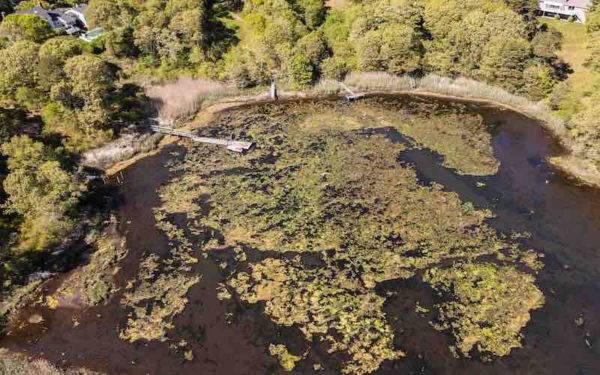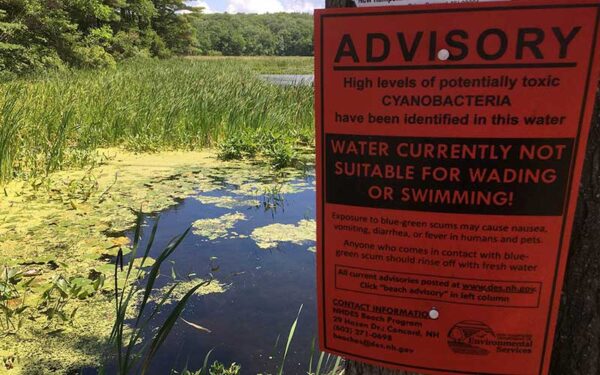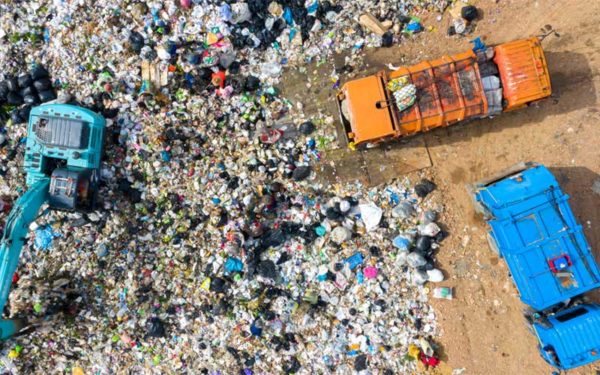The Charles River is much cleaner than it used to be, but stormwater pollution remains a threat to the health of the river. Photo: Shutterstock
This weekend, I was signed up to swim a mile in Massachusetts’s Charles River. I was supposed to jump into the river, proving that it’s clean and safe. It was supposed to be a celebration.
Instead, the Charles River Swimming Club’s One-Mile Swim was cancelled because of dangerously high bacteria levels in the water. The swim was initially scheduled for last Saturday, but the water quality last week was also bad, so it had been postponed to this weekend. The cancellation breaks an eight-year streak of the mile swim tradition.
The Charles is much healthier than it used to be, but this year’s cancellation is a reminder of the work still to do before it can receive an A grade every day of the year. The unsafe conditions last weekend and now were created when heavy rain swept oil, fertilizer, and whatever other pollutants are on our streets into the water just a few days before the swim. According to the most recent Environmental Protection Agency (EPA) report card for the river, if the weather is dry, it’s safe to swim in 66% of the time. But in rainy conditions, that number drops to 47%.
Frankly, we shouldn’t be satisfied with either number. Nor should we ignore the impact such high bacteria levels have on plant and animal life, which can’t simply cancel their use of the Charles’s waters.
We know that because of climate change, Boston will see more rainy days in the near future. If we don’t take action now, that means more water washing across paved surfaces, carrying more pollution out into the Charles.
CLF and our partners are working to avoid that future. By controlling what flows into the river, we are working to make sure that even on rainy days, the Charles is still clean and safe.
Keeping Pollution Out of the Charles
Even before the swim was cancelled, I joked with friends that I knew too much about the Charles to leap in carefree. While the river has come a long way since the ‘90s, when EPA gave it a D on its water quality report card (not swimmable), I knew that the number one threat to the river is one that’s not well regulated: stormwater runoff.
Stormwater runoff happens as rain falls or snow melts. Our built environment is full of paved surfaces like parking lots, flat-roofed office buildings, and roadways. Instead of being absorbed by the ground, all that water rushes off these watertight surfaces, picking up debris, pesticides, metals, chemicals, oil, and other pollutants along the way. That contaminated soup of dirty water drains into our waterways, including the Charles.
The runoff is worst from properties with acres of pavement: big box stores, strip malls, office and industrial parks, private universities, and major apartment complexes. About half of the Greater Boston area is made up of impervious surfaces, according to the most recent statewide survey. These private properties contribute a disproportionate amount of the polluted runoff harming the Charles.
However, none of them are regulated by EPA. Instead, EPA must formally bring them into a regulatory program to curb their polluted runoff — but the agency has failed to take any action to do so.
That’s why CLF and our partners at Charles River Watershed Association are calling on the federal agency to use the Clean Water Act to control stormwater pollution from major landowners with large amounts of paved surface and buildings. By treating the water before it has a chance to flow away, we can stop this pollution at the source.
Pollution Impacts Go Beyond Postponed Events
While I’m bummed about not being able to take a swim in the Charles, the risk of leaving our stormwater problems untreated are much more serious than a cancelled event.
Stormwater runoff is causing more toxic blue-green algae outbreaks in the river, which harms people and wildlife. The nitrogen in the runoff produces a layer of algae that sits on the top of the water, preventing sunlight and oxygen from going any deeper. Plants and animals below the surface can’t get the energy they need to survive.
Blue-green algae (also known as cyanobacteria) is also dangerous for us humans. It can cause headaches, vomiting, and nausea, and emerging research shows a link between exposure to toxins produced by cyanobacteria and neurodegenerative diseases like Alzheimer’s and Parkinson’s.
While I’m disappointed about the cancellation, I’d certainly rather err on the side of caution after a heavy rainfall. But with better stormwater regulation, we can keep the Charles clean – and swimmable — for the long term.




